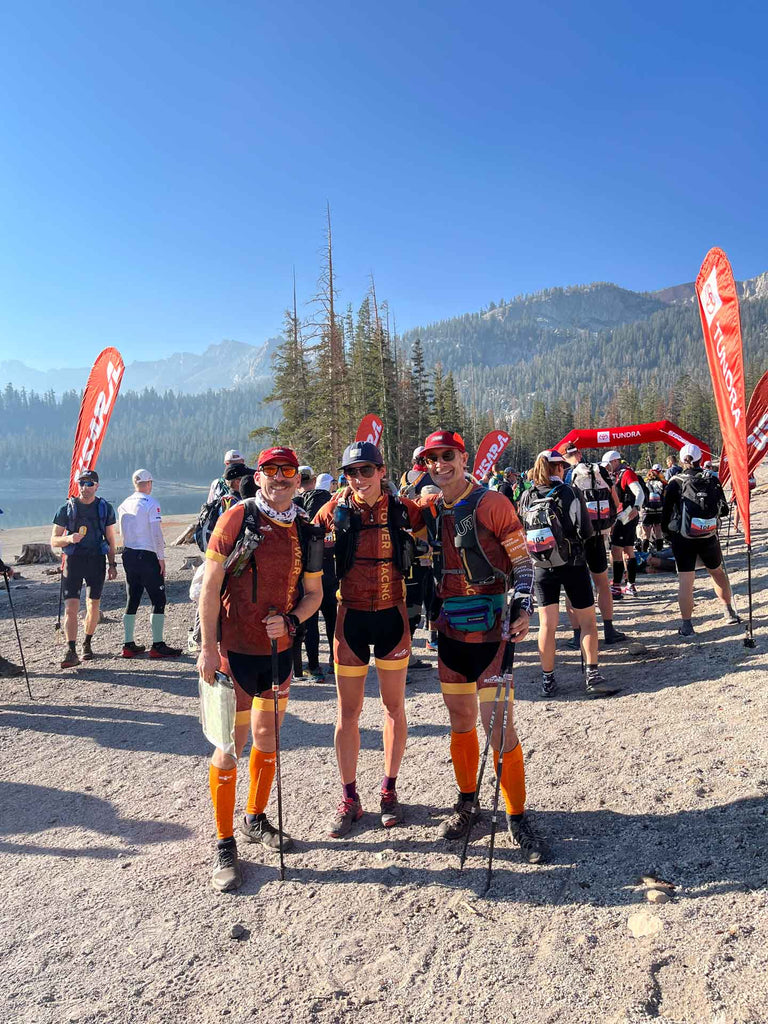What is Adventure Racing? Here's what you need to know.
Oct 24, 2022
MUIR Energy Trail Club member Jenica Law and her team from the Eastern Sierra just won 4th place at the USARA National Championship in Bishop, CA. She sat down with MUIR Energy content editor Lauren MacLeod to talk about mountain biking in darkness, kayaking while half awake, people on leashes, and the role MUIR gels played in her nutrition strategy.
 What is adventure racing?
What is adventure racing?
“It sounded like a multisport sufferfest.”
And you know what? That’s exactly what it was for Jenica Law. She and her partners competed in the USARA (United States Adventure Race Association) National Championship in Bishop, CA, a 30-hour race, 125 mile race with 13k elevation gain on foot, bike, and kayak.
Adventure racing is a special kind of type 2 fun, the basic premise of which is to get from point A to point B via your own route by whatever (non-motorized) means necessary. These races can last anywhere from six hours to several days.
Here’s the best part: no one knows the exact route until the day of the race. Fun!

A true team effort
Jenica is no stranger to outdoor adventure. She spends her time trail running, climbing, mountain biking, and skiing through the Eastern Sierra – often with multiple adventures in a day. When her sufferfest-loving buddies encouraged her to join the USARA party, she decided to give it a shot. “I hadn’t run for four months by this point, but figured it would be fun.”
Unlike most races out there, USARA races are team efforts through and through. With the rise of individualism at all cost, it was a nice change for Jenica to feel the camaraderie. “Some people are more alert than others, but you have to support each other. The main goal is not to stop the whole time,” she said.
There were times when the “go team” mentality may have gone a little far – “People used leashes to pull people through,” she laughed, “to drag your teammates through!”

How does adventure racing work?
Jenica and her teammates had to be ready for:
- Hiking 2500 feet to the top of Mammoth Mountain
- Biking from the top of the mountain down to Crowley Lake
- Kayaking the Owen’s River and across Crowley Lake
- Running/trekking/moving by any means necessary across the highway to Tom’s Place
- Hike-a-bike in full darkness
- Descending a black diamond-level trail–also in full darkness
- Canyoneering through a seldom-visited section of the Owen’s River Gorge–did I mention this happened in full darkness?
You might imagine that a race of this intensity and caliber would have some nice cushy aid stations – and you’d be dead wrong. “You might go six to ten hours until you see another station,” said Jenica.
Sure they exist, but only to provide items you’ve already pre-planned and pre-packed. Some items in Jenica’s bins included clothes for four seasons, lights, new shoes, new gear as the terrain shifted, and a bunch of different foods.

Nutrition for adventure races
Like most high-intensity efforts, eating enough to keep moving, all the while fighting sleep deprivation and cramping muscles, was no easy feat. “There are foods I never want to eat again that I ate on the course,” said Jenica, even though she typically enjoys foods like quesadillas and peanut butter sandwich cookies.
“MUIR energy gels were the only things that tasted good…plus peanut M&Ms,” she joked.
Her on-course strategy was to eat a MUIR Energy gel every 30 minutes and drink water constantly. She used salt tablets to keep up her electrolytes and caffeinated gels to–well, just to keep moving.
What’s next
After all that, Jenica is stoked to get back to adventure racing. Her sights are set on a multi-day expedition effort.
For now, she says, “it’s time to (rock) climb.”



